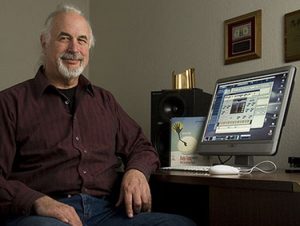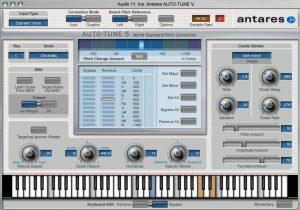Auto-tune has become an increasingly popular and standard tool in the music making industry. Auto-tune allows its users to set a base point and when they record, if they sing too far from their pre-set base, the program will automatically correct their notes. Artists can add personalization in how fast the pitches are corrected in the songs, giving each use of auto-tune individuality and its unique sound.
This technology was actually first used for the oil business, tracking the sound waves in order to find the oil underwater.[1] Auto-tune was invented by Andy Hildebrand for these purposes, but after experiencing great success from its use for oil drilling, he explored new ways to utilize the technology- and suddenly auto-tune fell into the laps of musicians and artists all over.[2] So, the tool was only introduced as a means to edit and manipulate music in 1996, making this a relatively recent addition to the music industry.[3]
Once introduced to the music industry, musicians began to manipulate its use in order to create diverse sounds and incorporate the tool into their works. Some use the tool more obviously than others, working to generate unique pieces of work while experimenting with tuning their vocals. Auto-tune often saved musicians from the “expense and hassle of having to redo sessions.”[4]
“The Antares utility Auto-Tune has become a standard recording studio tool”[5]
[1] Adam Hadhazy, “What’s Auto-Tune and How Does it Work?” LiveScience, Purch, 11 Sept. 2010, www.livescience.com/11046-auto-tune-work.html.[2] Sasha Frere-Jones, “The Gerbil’s Revenge,” The New Yorker, 9 June 2008, www.newyorker.com/magazine/2008/06/09/the-gerbils-revenge.[3] Andrew Shryock, “Irony of Absence: Literary and Technological Devices in the Rap of T-Pain,” In This Is the Sound of Irony: Music, Politics and Popular Culture, by Katherine L.Turner, 189, Surrey: Ashgate Publishing Limited, 2015.[4] Josh Tyrangiel, “Auto-Tune: Why Pop Music Sounds Perfect.” TIME, 5 Feb. 2009, http://apumusictech.com/courses/mus496/files/2014/02/pop-music-autotune.pdf.[5] Strawn et. al., “Computers and Music.”


